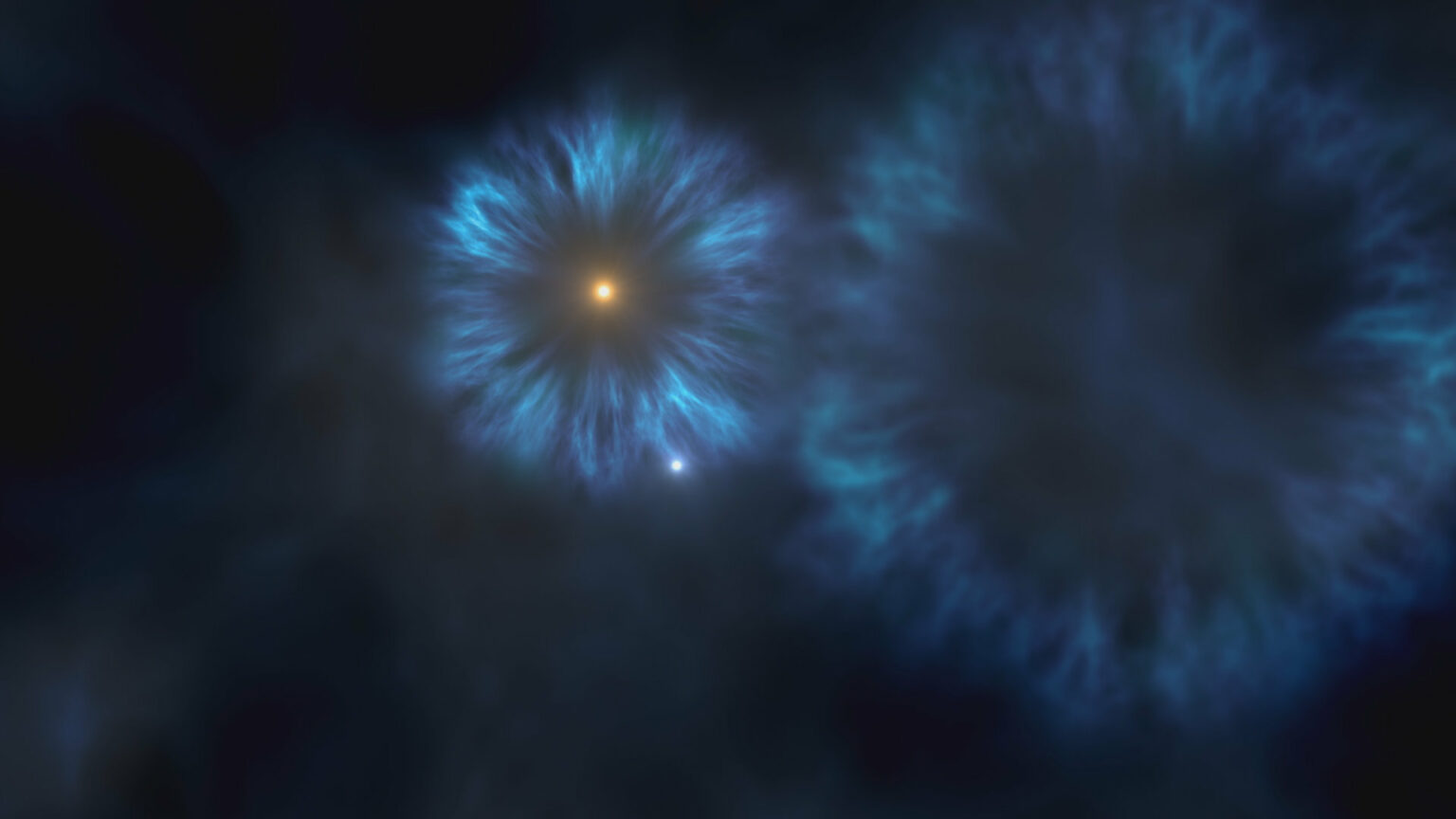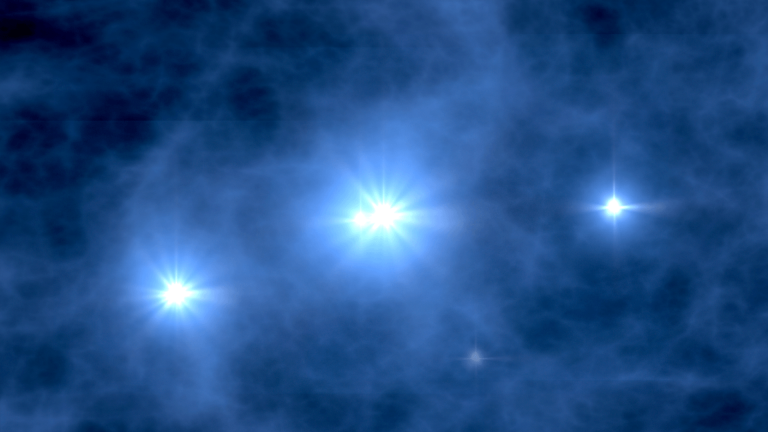At the dawn of the Universe, dark matter could interact with itself, forming clumps. Their annihilation fed the first stars, which could not yet support thermonuclear reactions by themselves.

Was dark matter always invisible
Physicists have suggested that dark matter could play a key role in the emergence of the first stars in the Universe. Now this exotic substance practically does not manifest itself in any way. It does not interact with electromagnetic radiation or with ordinary matter. Therefore, scientists judge its very existence only by its gravitational influence on galaxies.
However, at the very beginning of the Universe, when it was only a hundred million years old, the situation was completely different. The density of the substance was much higher. The radiation has not yet had time to separate from ordinary matter. Therefore, the whole space was dark and hot.
And under these conditions, dark matter could manifest itself much more strongly. At the center of the new theory is the assumption that it is still capable of interaction, albeit very weak and rare. In particular, at the beginning of the Universe, it could form clumps.
How the first stars lighted up
The traditional view of the processes during this period is that ordinary matter began to form the first protostars. Each of them was a thousand times smaller than the Sun. Therefore, they were unable to support thermonuclear reactions.
However, these objects began to merge with each other, creating the first monster stars. They were very massive and consisted almost entirely of hydrogen and helium. Therefore, their evolution took place very rapidly and ended with the formation of the first black holes.

Dark Matter Annihilation
The new theory depicts an alternative picture. In it, at the stage of protostars, clumps of black matter appear on the stage. Getting inside the clumps of ordinary matter, they began to interact with it. The authors of the publication call this process annihilation and clarify that until now we do not know definitively what the substance that we do not see actually is.
Traditionally, annihilation is the process of interaction of ordinary matter with antimatter, in which the mass of both particles is completely converted into energy. Something similar can happen with dark matter. It could begin to disappear, pumping protostars with radiation.
In this model, the first stars were “dark”. Not in the sense that they didn’t emit light. These luminaries were small, but they radiated energy in the same way as today’s ones. But its source was dark matter.
According to www.universetoday.com
Follow us on Twitter to get the most interesting space news in time
https://twitter.com/ust_magazine

